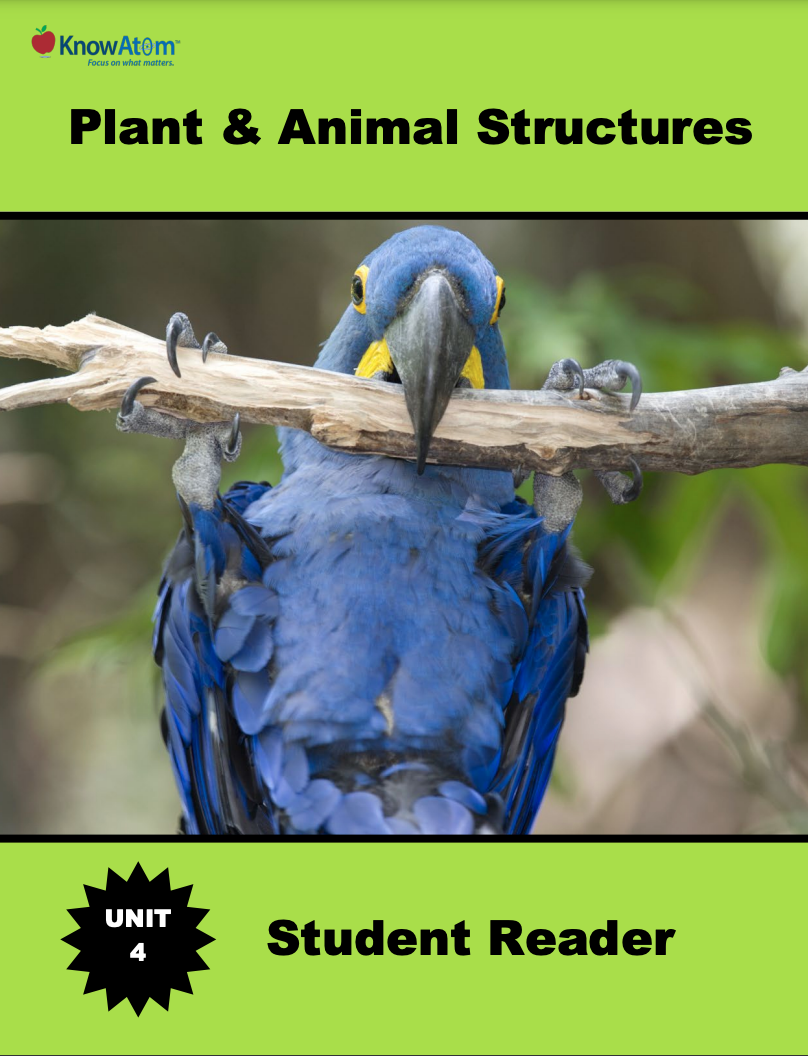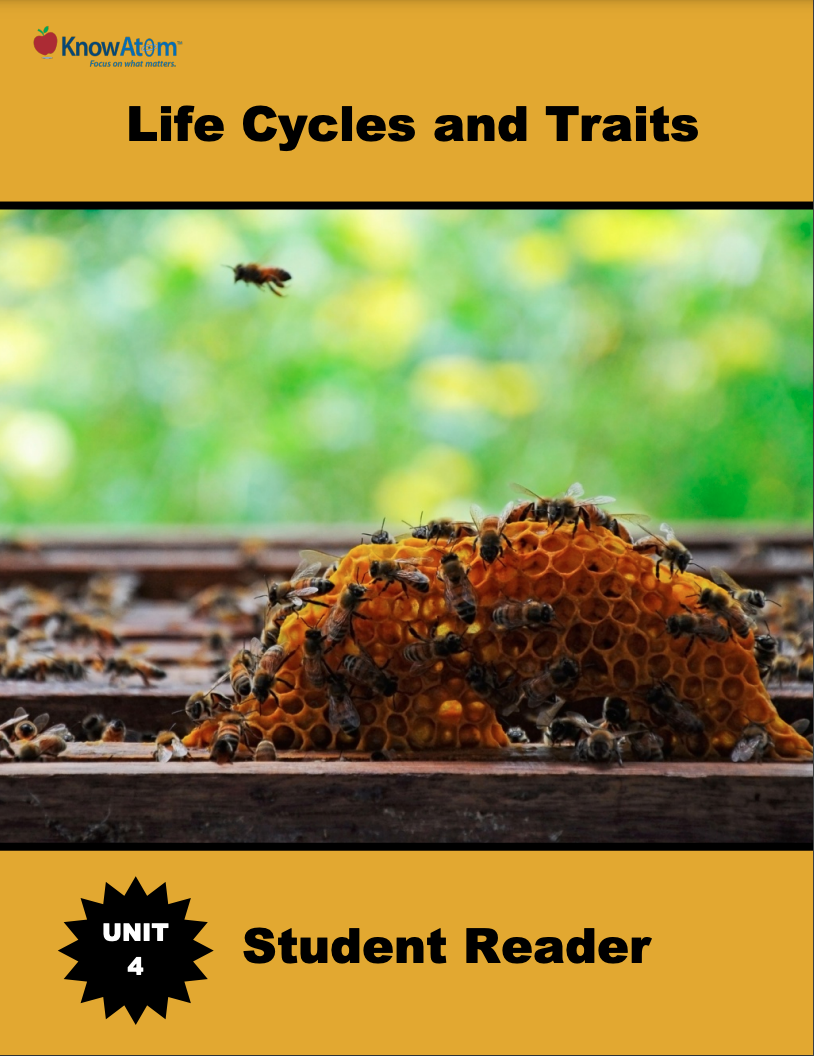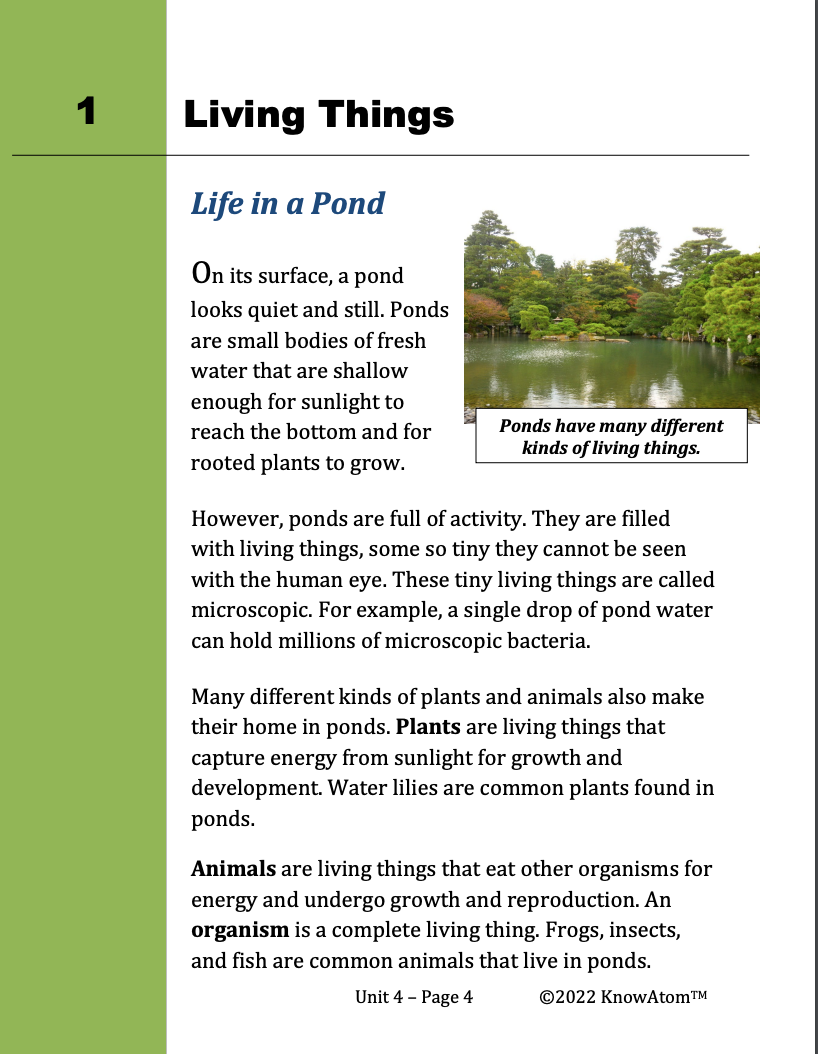
In this unit, students explore how living things depend on their environment and one another for survival. In this lesson, students discover phenomena surrounding how frogs have different internal and external structures throughout their life cycle that enable them to survive in their environments. This page highlights components of this lesson.

In this unit, students focus on individual organisms, analyzing the science phenomena of life cycles and the inheritance of traits. This lesson has students observing the patterns caused by the changes an organism goes through as it moves through its life cycle. This page is a high-level extract from the first lesson in this unit.

In this unit, students analyze how matter cycles between the living and nonliving parts of an ecosystem. They compare plant and animal cells, figuring out how internal structures help an organism get energy. Then, in this lesson, students figure out how energy flows and matter cycles through a food web, and investigate the phenomena of how plants convert non-food sources, such as light, air, and water, into food sources. This page showcases key elements of this lesson.
Standards citation: NGSS Lead States. 2013. Next Generation Science Standards: For States, By States. Washington, DC: The National Academies Press. Neither WestEd nor the lead states and partners that developed the Next Generation Science Standards were involved in the production of this product, and do not endorse it.
